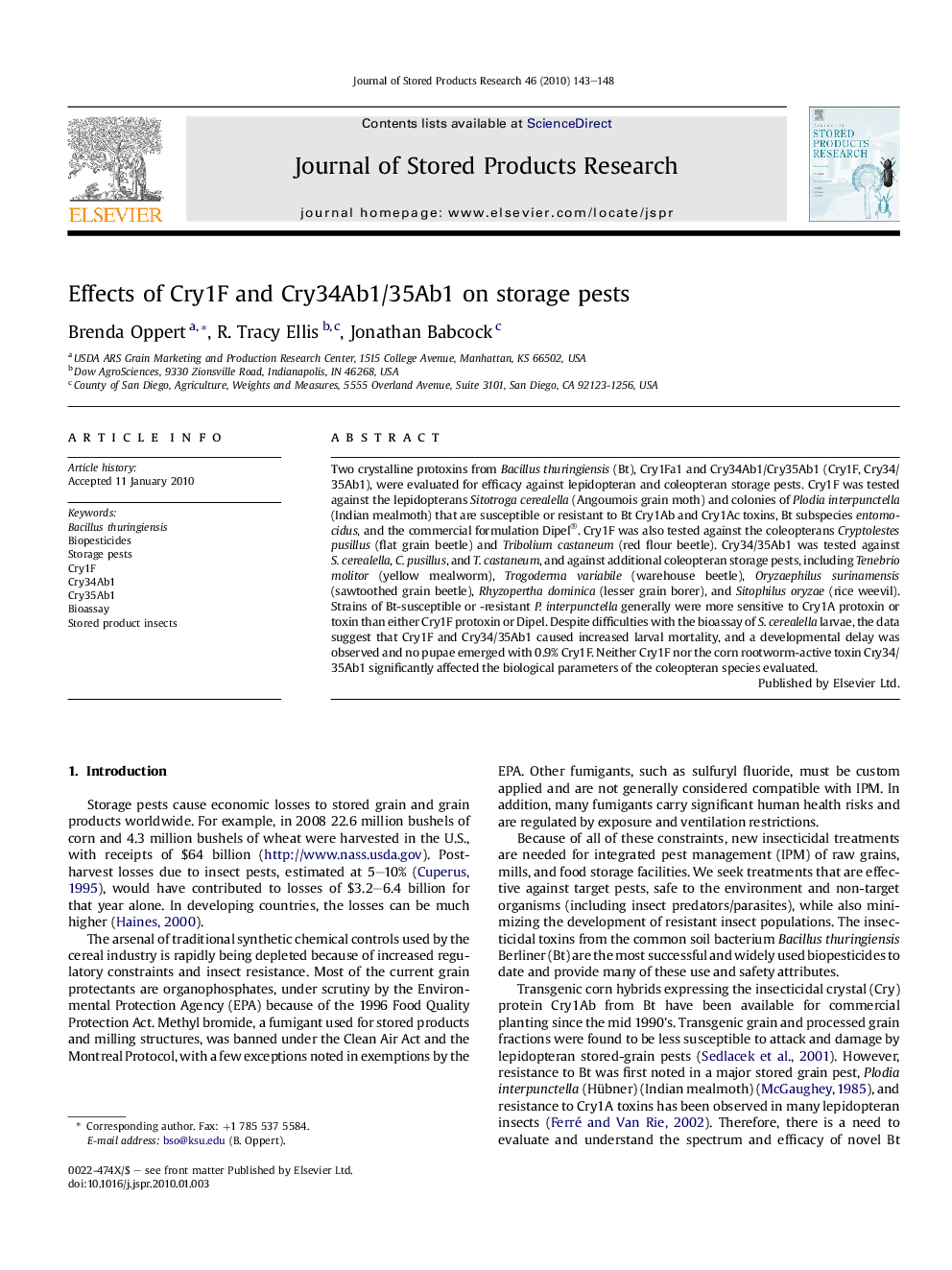| Article ID | Journal | Published Year | Pages | File Type |
|---|---|---|---|---|
| 4517295 | Journal of Stored Products Research | 2010 | 6 Pages |
Two crystalline protoxins from Bacillus thuringiensis (Bt), Cry1Fa1 and Cry34Ab1/Cry35Ab1 (Cry1F, Cry34/35Ab1), were evaluated for efficacy against lepidopteran and coleopteran storage pests. Cry1F was tested against the lepidopterans Sitotroga cerealella (Angoumois grain moth) and colonies of Plodia interpunctella (Indian mealmoth) that are susceptible or resistant to Bt Cry1Ab and Cry1Ac toxins, Bt subspecies entomocidus, and the commercial formulation Dipel®. Cry1F was also tested against the coleopterans Cryptolestes pusillus (flat grain beetle) and Tribolium castaneum (red flour beetle). Cry34/35Ab1 was tested against S. cerealella, C. pusillus, and T. castaneum, and against additional coleopteran storage pests, including Tenebrio molitor (yellow mealworm), Trogoderma variabile (warehouse beetle), Oryzaephilus surinamensis (sawtoothed grain beetle), Rhyzopertha dominica (lesser grain borer), and Sitophilus oryzae (rice weevil). Strains of Bt-susceptible or -resistant P. interpunctella generally were more sensitive to Cry1A protoxin or toxin than either Cry1F protoxin or Dipel. Despite difficulties with the bioassay of S. cerealella larvae, the data suggest that Cry1F and Cry34/35Ab1 caused increased larval mortality, and a developmental delay was observed and no pupae emerged with 0.9% Cry1F. Neither Cry1F nor the corn rootworm-active toxin Cry34/35Ab1 significantly affected the biological parameters of the coleopteran species evaluated.
